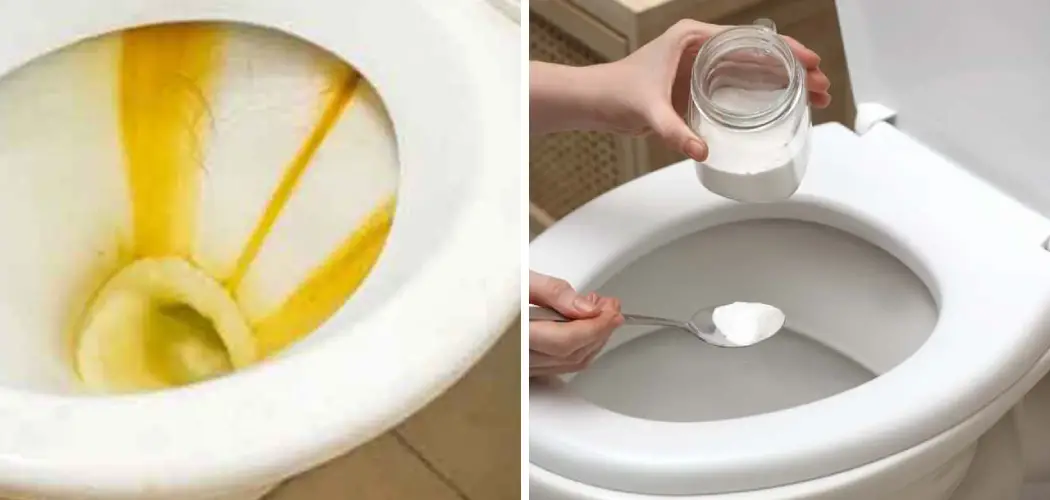Are you struggling to get those unsightly yellow stains out of the toilet? All of us have been there! It can be a real hassle, especially if you don’t know what products to use or how to effectively remove that stubborn stain. But worry not in this post; we will cover everything you need to know on how to get yellow stain out of toilet so that you can finally put your mind at ease and tackle the yellow stain problem head-on with confidence.
From figuring out which product is suitable for your type of toilet surface all the way through discussing effective removal methods and possible preventive measures, by following our advice, it won’t take long until your bathroom looks spotless once again. So let’s jump right in and see how we can solve this issue together!
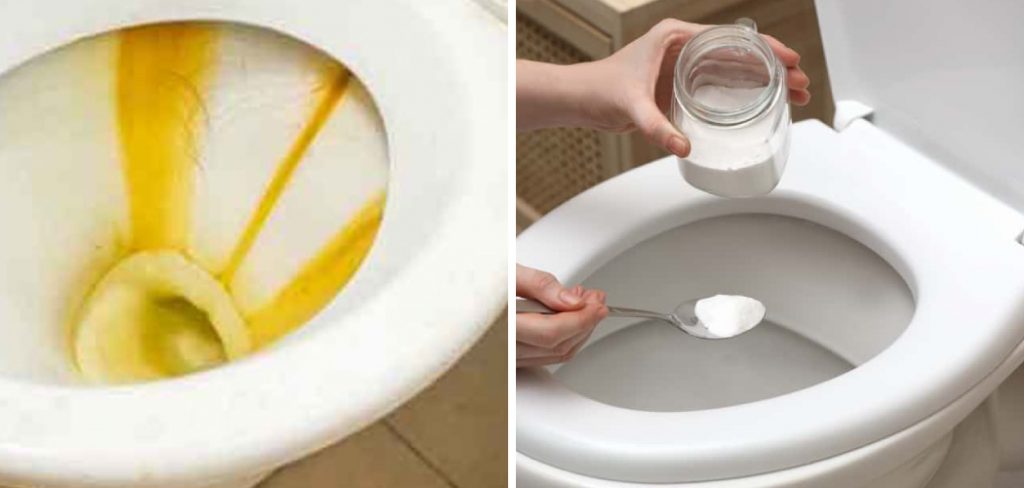
Why do toilet seats get yellow stains?
Toilet seats typically develop yellow stains from hard water and mineral deposits. Hard water is caused by a high concentration of minerals like calcium, magnesium, or iron in the water used to flush your toilet. These minerals can build up over time on the surface of the toilet seat and cause discoloration. In addition, bacteria and mold can also increase the severity of these yellow stains.
Thankfully, there are cleaning methods you can use to help remove yellow stains from your toilet seat. The following steps will help get your toilet seat looking like new again:
- Start by mixing baking soda with a small amount of warm water until it forms a paste.
- Apply the paste directly onto the stained area of the toilet seat and let it sit for at least 15 minutes before scrubbing gently with a sponge or brush.
- After scrubbing, rinse off any remaining residue and dry the surface with a cloth or paper towel before returning the seat to its original position.
- For more stubborn yellow stains, try using vinegar or a commercial toilet bowl cleaner. Simply apply the cleaner to the affected area and let it sit for 20 minutes before scrubbing with a sponge or brush.
- Once you’re done, rinse off any remaining residue and dry the surface with a cloth or paper towel before returning the seat to its original position.
By following these steps, you can help get yellow stains out of your toilet seat and restore its original appearance. With regular cleaning, you should be able to keep your toilet looking clean and fresh for years to come!
If these methods fail to remove yellow stains from your toilet seat, you can always purchase a new one as well. It’s important to make sure that when buying a new toilet seat, you choose one that is made from quality materials and designed to resist staining. This will help ensure your toilet seat looks great for years to come!
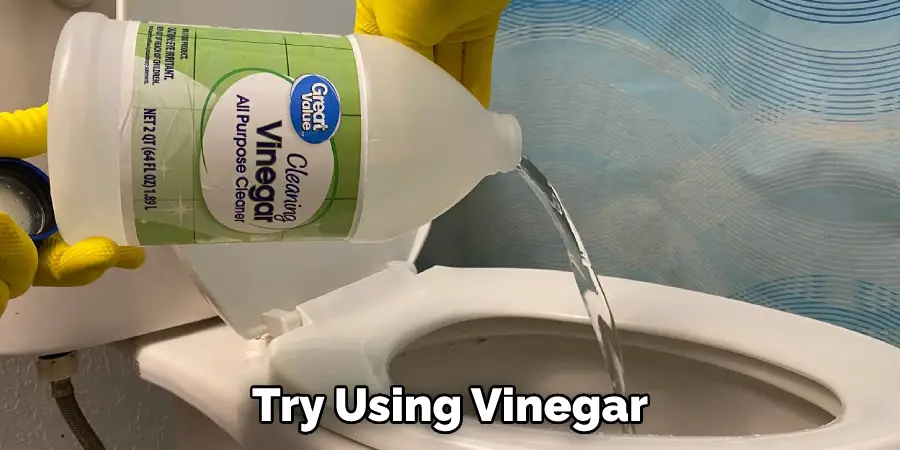
8 Methods How to Get Yellow Stain Out of Toilet
1. Baking Soda and Vinegar
One of the most effective and affordable ways to clean a toilet bowl is by using baking soda and vinegar. Simply pour 1 cup of baking soda into the toilet bowl, followed by 1 cup of vinegar. Allow the mixture to sit for 30 minutes, then scrub the bowl with a toilet brush. Flush the toilet to rinse away the baking soda and vinegar. The yellow stains should be gone! If they are still present, repeat the process.
2. Borax
Borax is a natural cleaning product that can be used to clean a variety of surfaces, including toilets. To use, simply sprinkle 1/2 cup of borax around the toilet bowl, then scrub with a toilet brush. Leave the borax in the toilet for at least half an hour before flushing. After scrubbing, flush to rinse away the solution and any yellow stains in the toilet bowl. If necessary, repeat the process until all traces of the yellow stain have been removed. Borax is an effective, natural, and safe way to remove yellow stains from a toilet.
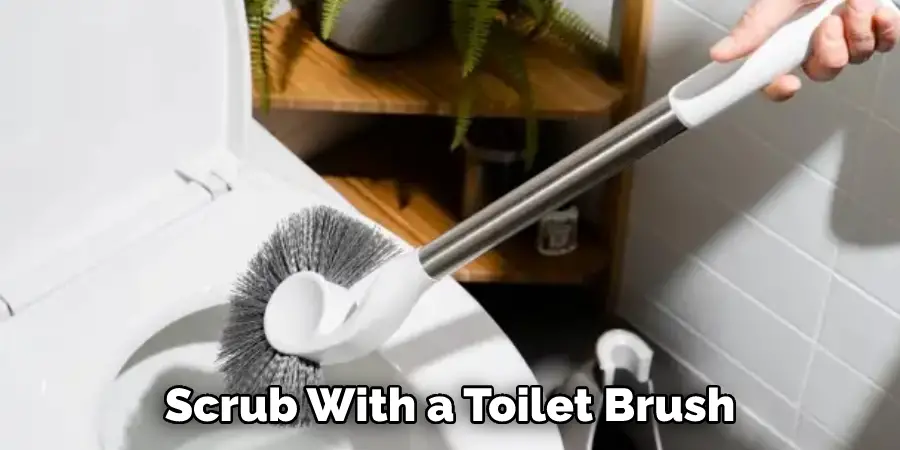
3. Lemons
Lemons are not only great for cooking but they can also be used to clean toilets. Simply cut a lemon in half and use it to scrub the toilet bowl. The acidic nature of lemons will help to break down stains and disinfect the bowl. Flush the toilet when finished to rinse away any residue. This method is great for removing yellow stains from toilets.
If the lemon cleaning doesn’t work, try the next step. Although it may take a bit more effort, it is still an effective way of removing yellow stains. Try to use natural products if possible, as they are better for the environment and don’t contain any harsh chemicals.
4. Vinegar and Salt
Vinegar and salt can also be used together to clean a toilet bowl. Simply pour 1 cup of vinegar into the bowl, followed by 1/2 cup of salt. Scrub the toilet with a brush and let it sit for 10 minutes. After 10 minutes, flush the toilet to rinse out the mixture. You may have to repeat the process if the stains are particularly stubborn.
Finally, use a moist cloth or paper towel to wipe down any remaining areas of discoloration. With a little elbow grease, your toilet should be back to its original white shade in no time at all. However, if the stains are still present after a few attempts, you may need to seek professional cleaning help.
5. Coca-Cola
Coca-Cola is not just for drinking; it can also be used as a cleaning agent. Simply pour 1/2 gallon of Coke into the toilet bowl and let it sit for 30 minutes. The acid in Coke will help to break down stains and disinfect the bowl. Scrub if necessary, then flush the toilet when finished. If the stain persists, repeat the process or try a different method. Try to avoid using Coke on colored toilets, as the acid can damage the surface.
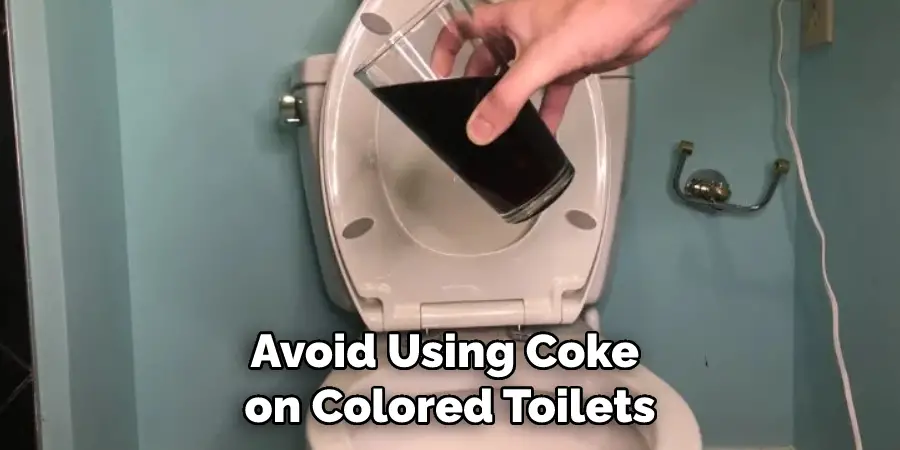
6. Bleach
Bleach is a powerful cleaning agent that can be used to clean toilets. To use, simply pour 1/2 cup of bleach into the toilet bowl and let it sit for 10 minutes. Scrub the affected area with a toilet brush and then flush. If the stain persists, you may need to repeat the process.
Be sure to wear protective gear such as gloves, goggles, and a face mask when using bleach. Additionally, it’s important to open windows or turn on a fan for proper ventilation. When finished, wash your hands thoroughly with soap and water.
7. Use Ammonia
Ammonia is a strong chemical cleaning agent that should be used with caution. To use, mix one-part ammonia with two parts water in a spray bottle and spray on the stain. Let sit for several minutes, and then scrub with a toilet brush. Rinse with water and repeat as necessary. Be sure to wear protective gloves and open windows/doors for ventilation when using ammonia.
Although ammonia can be effective on hard-to-remove stains, it should not be used frequently as it can damage the porcelain surface of your toilet. It is best to use a milder non-abrasive cleaner first, then move on to ammonia if needed.
8. Use Hydrogen Peroxide
Hydrogen peroxide is a strong chemical cleaning agent that should be used with caution. It can be used to remove yellow stains from toilets, as well as other areas where hard water has caused discoloration. To use hydrogen peroxide, pour a liberal amount into the toilet and let it sit for about an hour. Afterward, use a stiff-bristled brush to scrub away at the stain. Rinse with warm water to flush the toilet and check to see if the yellow stains are gone.
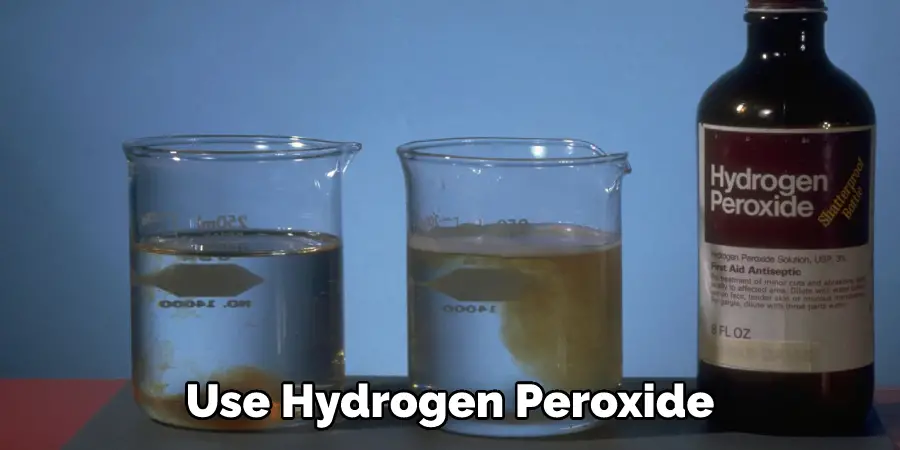
If not, repeat the process as needed. Be sure to wear rubber gloves when handling hydrogen peroxide, as it can be an irritant to the skin or eyes. Additionally, keep in mind that hydrogen peroxide is a bleaching agent, so don’t use this method on colored toilets. It’s best to use this method on white toilet bowls only. Additionally, it may be a good idea to test hydrogen peroxide in a small area first before using it on the entire toilet bowl.
Conclusion
A yellow stain in your toilet is most likely due to a buildup of minerals from hard water. Toilet bowl cleaners can help remove these stains. Be sure to follow the instructions on the product label and wear gloves and protective eyewear while cleaning. If you have a porcelain toilet, be extra careful not to scratch the surface while scrubbing. For tough stains, you may need to repeat the process several times or try a different cleaner. If you have any other questions about getting the yellow stain out of the toilet, or if you want to learn more about how to get yellow stain out of toilet, be sure to check out our other blog posts. Thanks for reading!
You Can Check It Out to Prevent Grease Build Up in Pipes

